In their press release about the new Enhance Details feature in ACR 11.2 and the current Lightroom Classic CC release, Adobe said:
Powered by Adobe Sensei, Enhance Details produces crisp detail, improved color rendering, more accurate renditions of edges, and fewer artifacts. Enhance Details is especially useful for making large prints, where fine details are more visible. This feature applies to raw mosaic files from cameras with Bayer sensors (Canon, Nikon, Sony, and others) and Fujifilm X-Trans sensors.
In Sharad Mangalink’s Adobe blog post on the 12th of February, he said:
The new Enhance Details feature available in Camera Raw, Lightroom Classic, and Lightroom CC approaches demosaicing in a new way to better resolve fine details and fix issues like false colors and zippering. Enhance Details uses machine learning—an extensively trained convolutional neural network (CNN)—to provide state-of-the-art quality for the images that really matter. Enhance Details works well on both Bayer (Canon, Nikon, Sony, etc.) and X-Trans (Fujifilm) raw mosaic files.
It’s not explicitly stated, but it’s easy to read the above summaries and think that Enhance Details sharpens. “Better resolve fine details” and “crisp detail” both nod in that direction.
But that would be a wrong interpretation.
Here’s a frequency-domain analysis of slanted edge backlit razor blade with Lr’s default sharpening, both with normal demosaicing and with Enhanced Detail demosaicing.
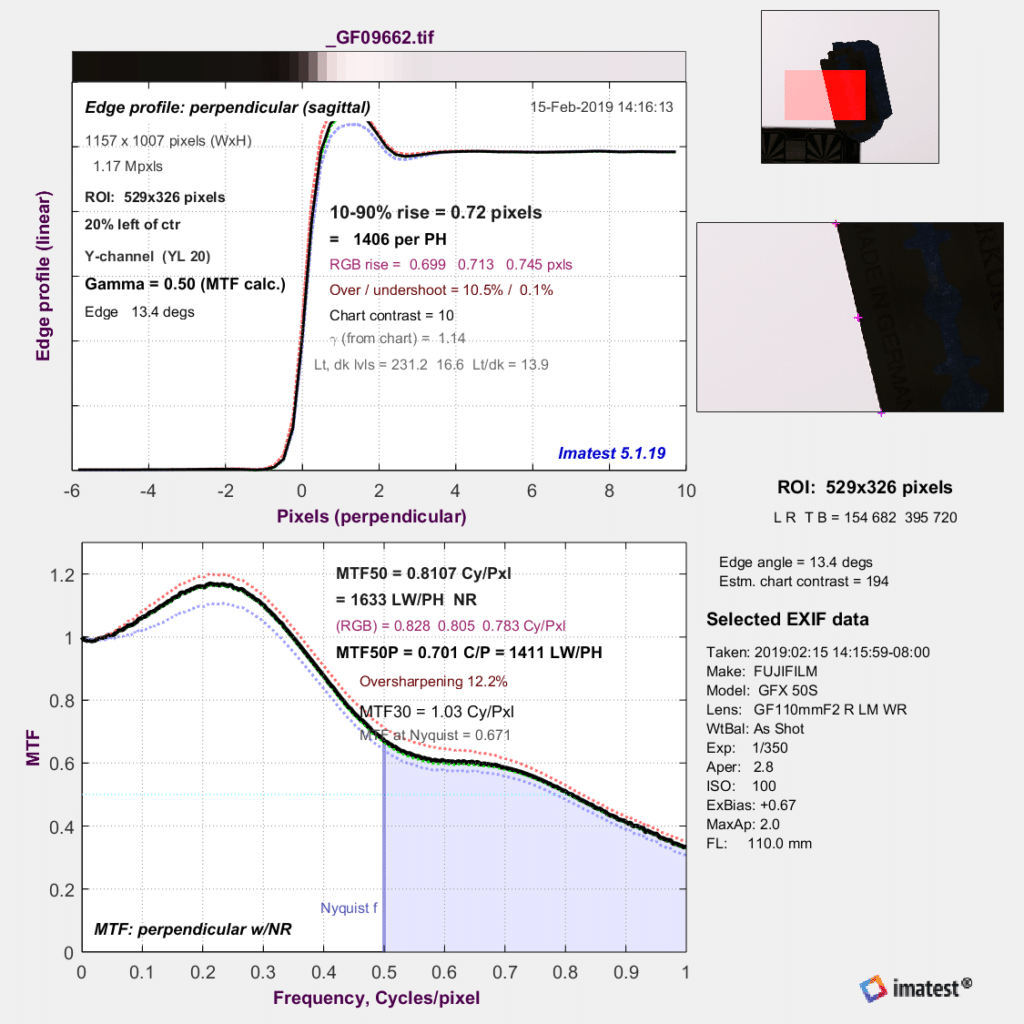
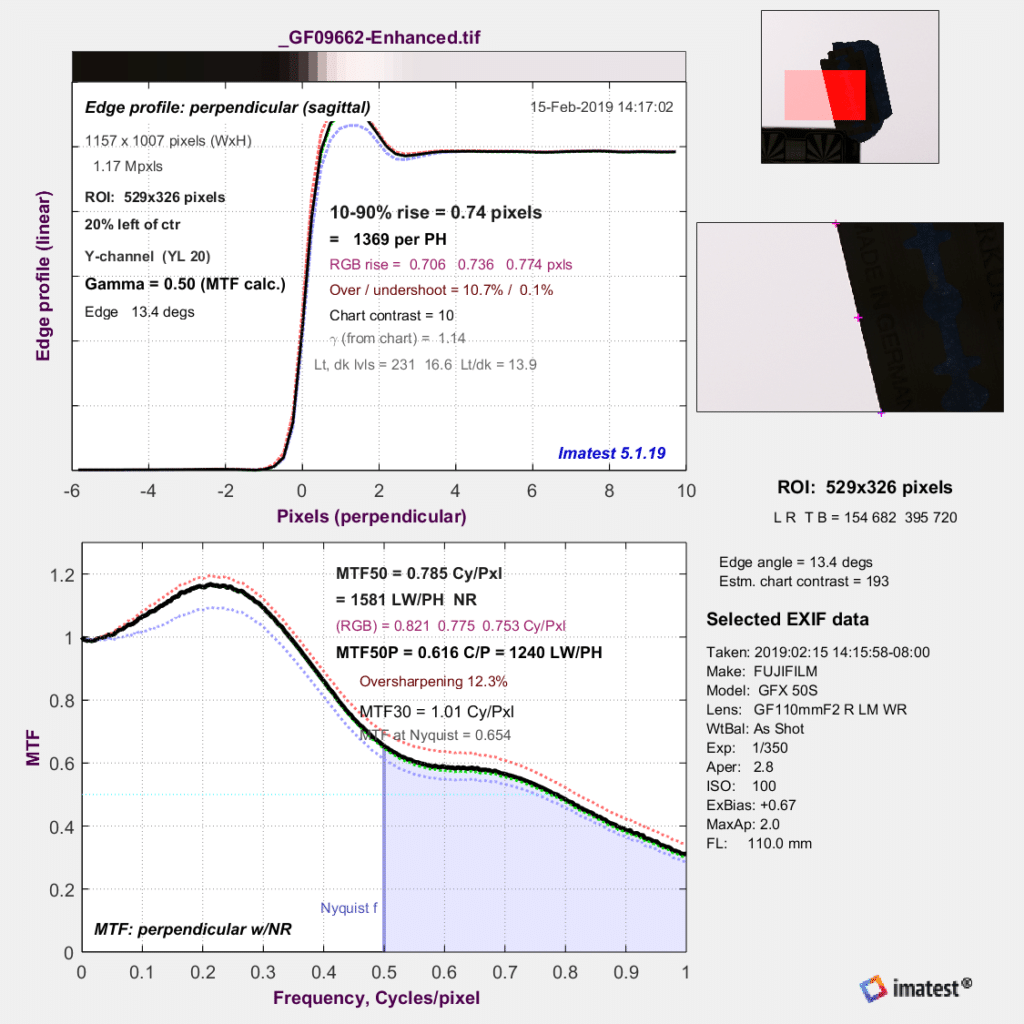
Essentially the same. Lightroom’s default sharpening is extreme. Let’s defeat that; setting the strength to zero:
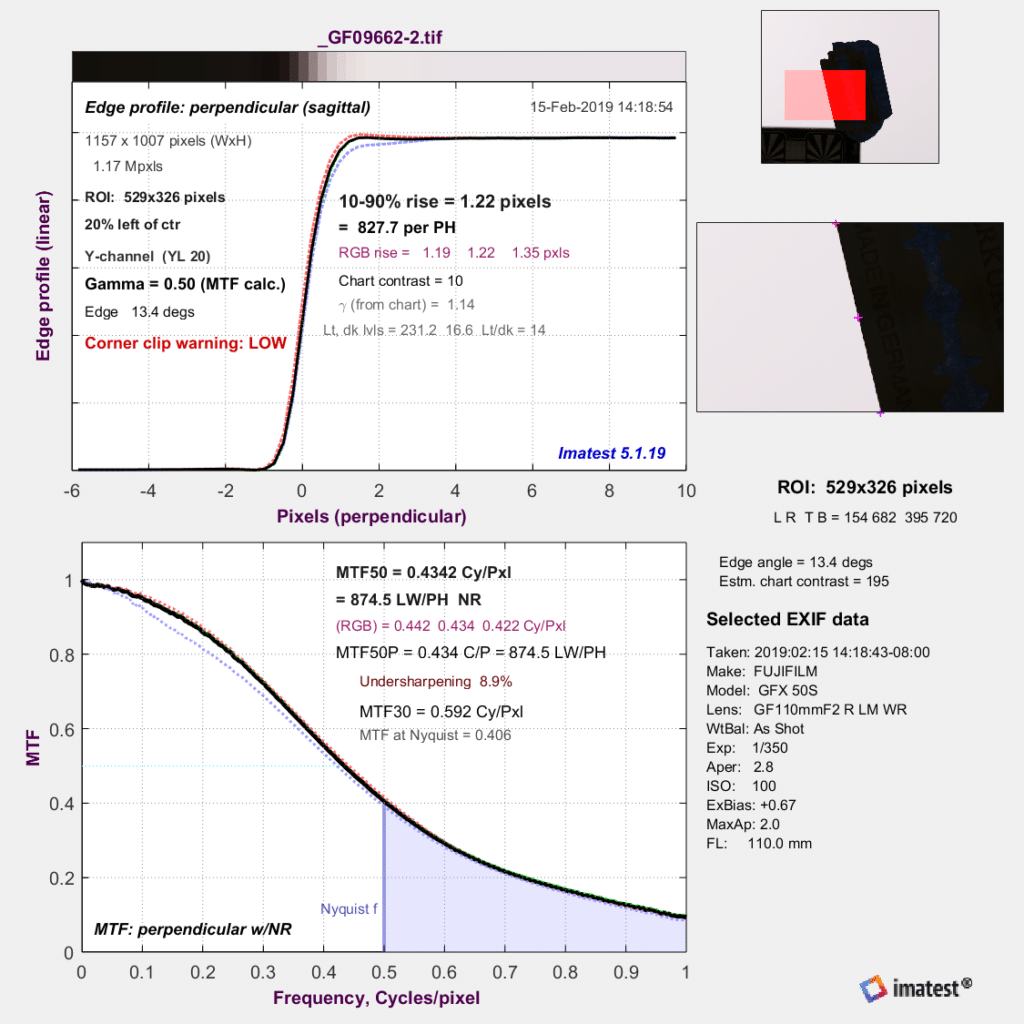
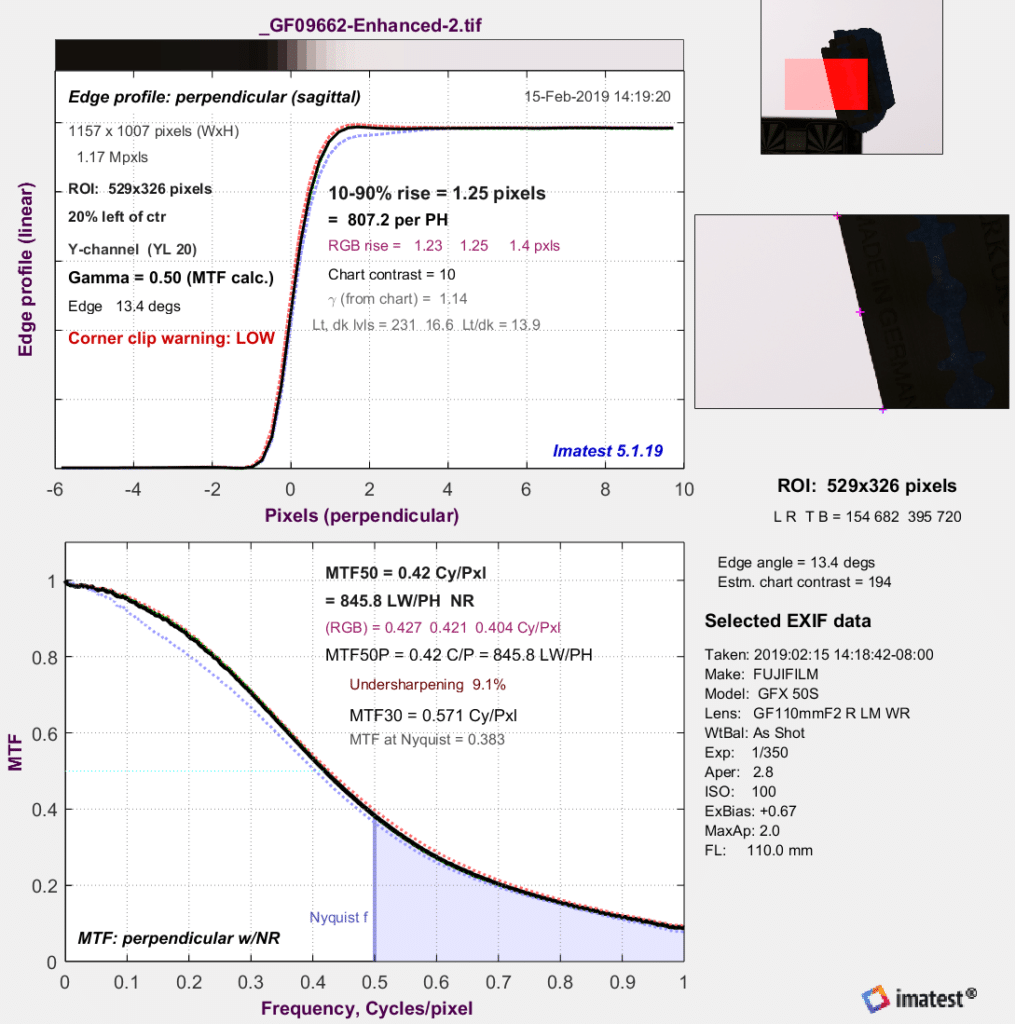
Also essentially the same.
The above edge is extremely sharp, and also well-focused to a degree that you’d rarely see in the field. What happens when we use a target that isn’t as sharp?
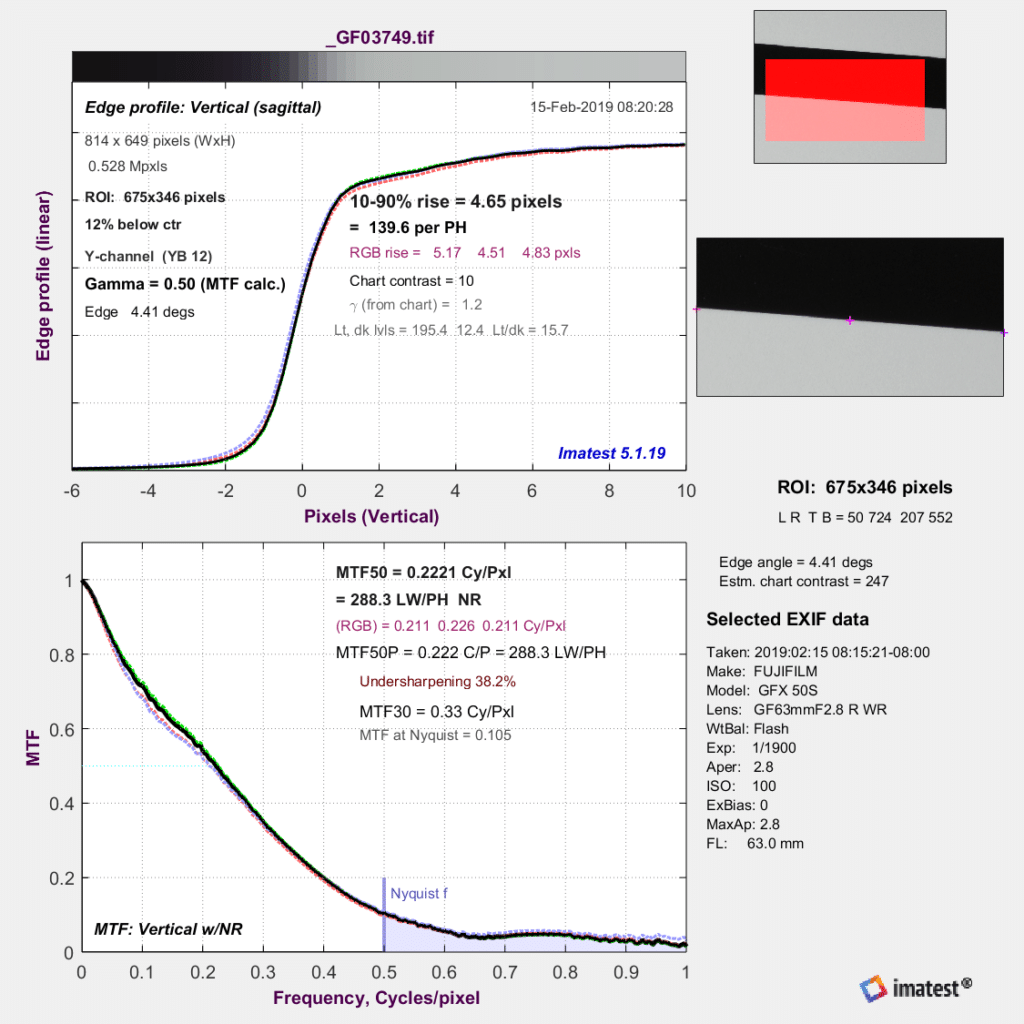
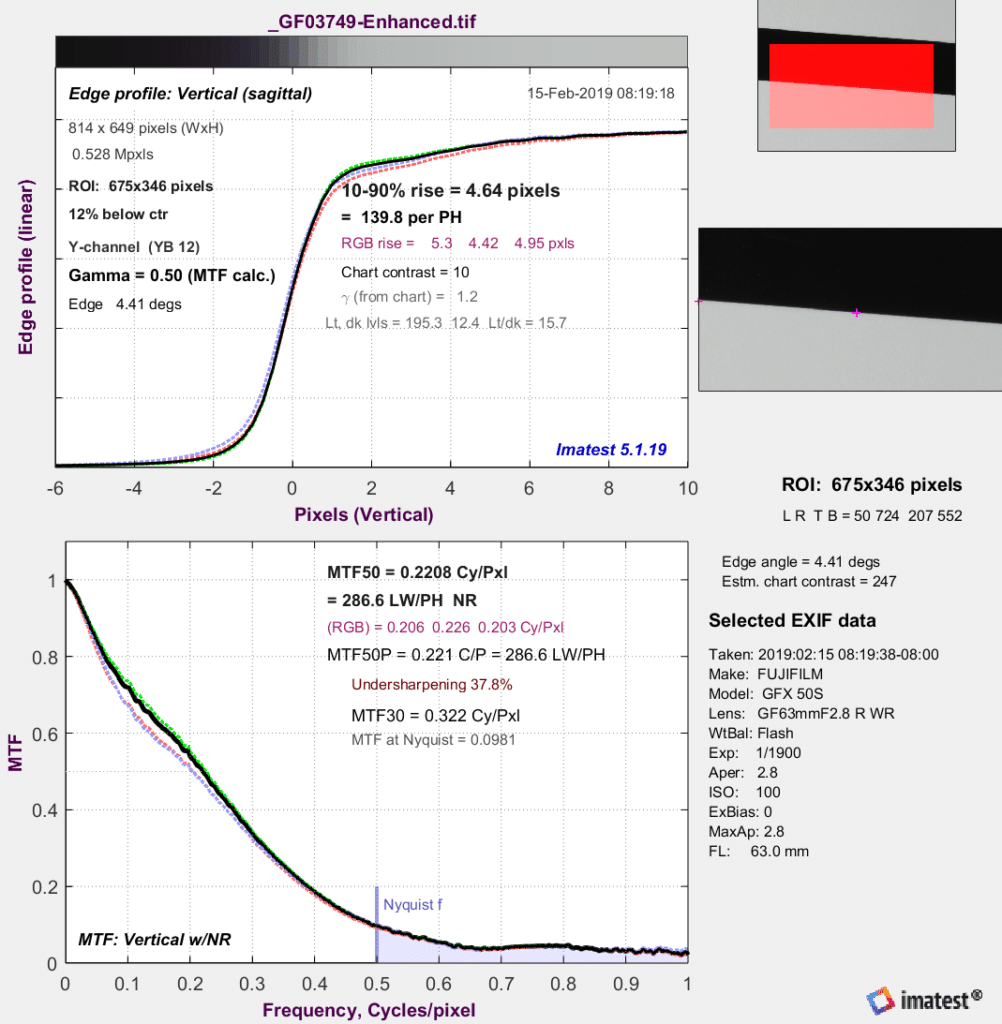
That’s essentially the same, too.
Adobe said that there is improvement in resolution using a Siemens star target. I’m willing to believe that from the Siemens star images I showed yesterday, but it may well be that the improvement in resolution is entirely due to the suppression of artifacts.
“…better resolve fine detail and fix issues like false colors and zippering…”
Good to know Jim. Based on what they say – and knowing that many advanced raw converters run additional image improvement algorithms after demosaicing (e.g. false color suppression) – my educated guess would be that they run an additional ‘fix’ step after demosaicing, aimed specifically at cleaning up false color and aliasing artifacts. The fact that it works well with both Bayer and X-Trans sensors confirms that it is most likely a step that occurs after demosaicing (although still possibly using the raw data as one of its inputs).
A CNN based algorithm would work well for that task, replacing areas with aliasing and false color with more plausible unaliased edges and colors. Aliasing and false color do not show up on slanted edge measurements. The fact that the algorithm’s effects do not affect them suggest that it doesn’t do much more than that in order to “better resolve fine detail”. And Amen to that.
Jack
“Adobe said that there is improvement in resolution using a Siemens star target.”
I am willing to bet that there are many, many oversampled Siemens star images in the data set used to train the network. This would give the ability to the algorithm of replacing curvy aliased lines near the center with plausibly straight ones. And isn’t that an apparent improvement in system resolution?
Except that if the Siemens star were replaced with a similar one where the spokes actually curved near the center, I’d also be willing to bet that ‘enhance detail’ would straighten them up. Would that be an improvement in resolution? 🙂
Great feature, I must say perhaps for the first time since 2010 I get the itch to upgrade CS5 to CC. Or perhaps I should just wait for Topaz (or similar) to come up with their own version. Intuitively, this should work almost as well on rendered images.